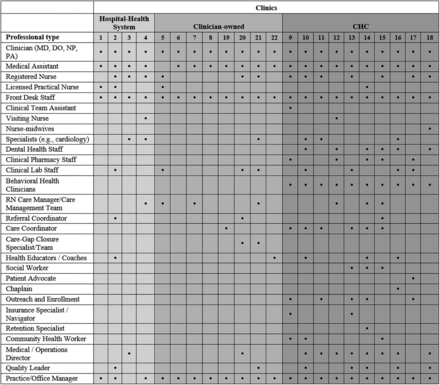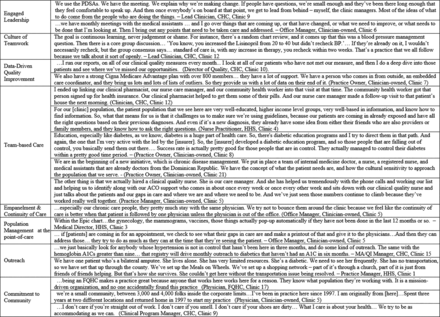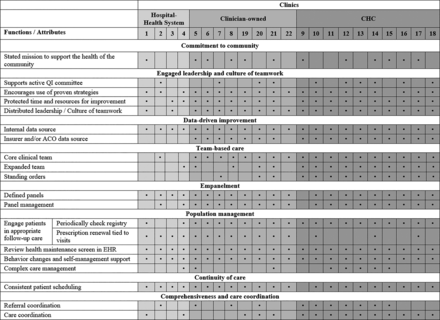Article Figures & Data
Tables
Domain Description Description - Full NQF Aspirin Aspirin for CVD Percentage of patients 18 years of age and older who were diagnosed with acute myocardial infarction (AMI), coronary artery bypass graft (CABG) or percutaneous coronary interventions (PCI) in the 12 months before the measurement period, or who had an active diagnosis of ischemic vascular disease (IV.D) during the measurement period, and who had documentation of use of aspirin or another antiplatelet during the measurement period 0068 Blood Pressure Hypertension control < 140/90 mm Hg Percentage of patients 18 to 85 years of age who had a diagnosis of hypertension and whose blood pressure was adequately controlled (< 140/90 mm Hg) during the measurement period 0018 Cholesterol Statin therapy Percentage of the following patients - all considered at high risk of cardiovascular events - who were prescribed or were on statin therapy during the measurement period:
• Adults aged ≥ 21 years who were previously diagnosed with or currently have an active diagnosis of clinical atherosclerotic cardiovascular disease (ASCVD); OR
• Adults aged ≥ 21 years who have ever had a fasting or direct low-density lipoprotein cholesterol (LDL-C) level ≥ 190 mg/dL; OR
• Adults aged 40 to 75 years with a diagnosis of diabetes with a fasting or direct LDL-C level of 70 to 189 mg/dLNone Diabetes Poorly controlled (HbA1c > 9) Percentage of patients 18 to 75 years of age with diabetes who had hemoglobin A1c > 9.0% during the measurement period OR had no measured HbA1c during the measurement period 0059 Abbreviation: NQF, National Quality Forum.
Practice Ownership Number Percentage Clinician-owned 8 36.36% Hospital-health system 4 18.18% Community Health Center 10 45.45% Accountable Care Organization (ACO) involvement Part of an ACO 7 31.82% RUCA designation Metropolitan area core 16 72.73% Metropolitan area high commuting 3 13.64% Small town core 2 9.09% Rural area 1 4.55% Geographic region Southwest 4 18.18% Northwest 4 18.18% Midwest 4 18.18% Northeast 6 27.27% Southeast 4 18.18% Practice size* Small (2 to 5 clinicians) 17 77.27% Medium (6 to 10 clinicians) 2 9.09% Large (>10 clinicians) 3 13.64% Patient characteristics Greater than 50% patients indicated as “non-white” 6 27.27% Greater than 50% Medicaid payer 7 31.82% Greater than 50% Medicare payer 2 9.09% ↵* This is based on the number of full-time equivalent clinicians (not full-time equivalent primary care clinicians).

Abbreviation: CHC, Community Health Centers.
- Table 4.
Definitions of the Functions and Attributes Reported by Practices with Higher Performance on Chronic Disease Care

1Chreim S, Williams BE, Janz L, Dastmalchian A. Change agency in a primary health care context: The case of distributed leadership. Health Care Manage Rev. 2010;35(2):187-199. doi:10.1097/HMR.0b013e3181c8b1f8.
Abbreviations: ACO, Accountable Care Organization; QI, quality improvement; MA, Medical assistants; EHR, Electronic Health Record.

Abbreviations: CHC, Community Health Centers; HHS, Hospital-health systems; FQHC, Federally qualified health centres.
- Table 6.
Functions and Attributes of Practices with Higher Performance on Chronic Disease Care across Practices

Abbreviations: CHC, Community Health Centers.










